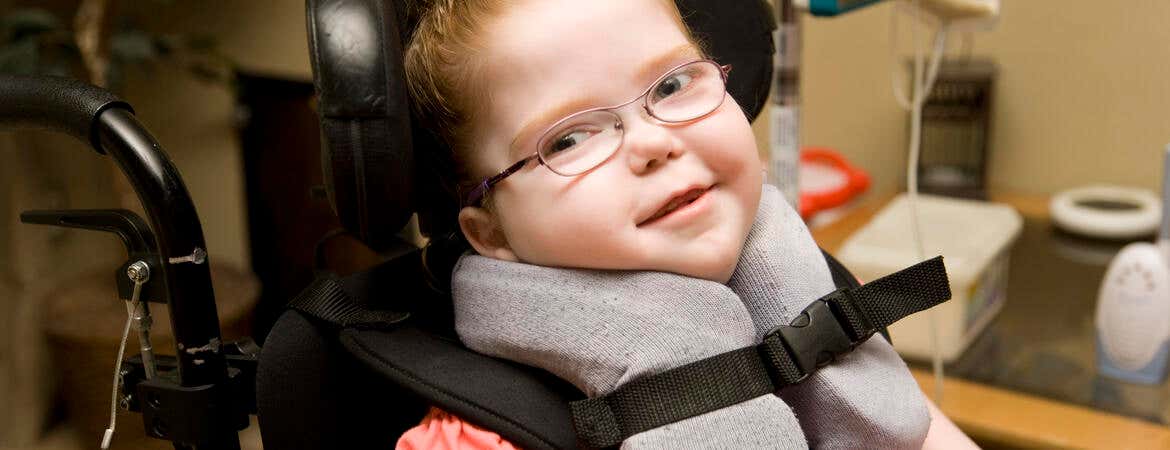Robot sleeves help children with cerebral palsy gain control over their arm movements
UC Riverside engineers are developing low-cost, robotic “clothing” to help children with cerebral palsy gain control over their arm movement

[Oct 1, 2022: Jules Bernstein, University of California - Riverside]
Soft machines enhance disabled peoples’ independence. (CREDIT: Getty Images)
UC Riverside engineers are developing low-cost, robotic “clothing” to help children with cerebral palsy gain control over their arm movements.
Cerebral palsy is the most common cause of serious physical disability in childhood, and the devices envisioned for this project are meant to offer long-term daily assistance for those living with it.
However, traditional robots are rigid and not comfortable on the human body. Enabled by a $1.5 million grant from the National Science Foundation, this project is taking the novel approach of building devices from soft textiles, which will also facilitate more natural limb functioning.
“Hard materials don’t interact well with humans,” said Jonathan Realmuto, UCR assistant professor of mechanical engineering and project lead. “What we’re going for by using materials like nylon and elastic are essentially robotic garments.”
Related Stories
These garments will contain sealed, airtight regions that can inflate, making them temporarily rigid, and providing the force for movement.
“Let’s say you want to flex the elbow for a bicep curl. We can inject air into specially designed bladders embedded in the fabric that would propel the arm forward,” Realmuto said.
The project will focus not only on constructing the robot, but also on developing the algorithms that teach the machine to predict movements the wearer wants to execute.
Concept illustration of the proposed robotic garment. (CREDIT: Jonathan Realmuto/UCR)
“One of the critical challenges in providing movements assistance is interpreting a person’s intention. We want a “volitional controller,” so the robot behaves in terms of what the human wants to do,” Realmuto said. The project team also includes UCR mechanical engineering assistant professor Jun Sheng.
One aspect of such a controller is using a variety of small sensors on the sleeves to detect small voltages generated by muscles when they contract. These sensors will feed the voltage data into an algorithm that will be trained to extract the wearer’s intention from them.
Experimental setup for previous iterations of the device. (CREDIT: Jonathan Realmuto/UCR)
Using widely available textiles, rather than traditional, rigid materials will likely keep the cost of the sleeves low. In addition, the team intends to minimize the use of sophisticated electronics, which will also help reduce overall costs for patients.
This project is being conducted in partnership with Children’s Hospital of Orange County, where patients from a pediatric movement disorder clinic will help test and refine the prototypes.
Additionally, the research team will hold annual meetings at the hospital for each of the four years of the project. These meetings will include the patients and their families, as well as occupational therapists, and elicit their feedback on the technology as it develops.
“By centering stakeholders in our design process, we hope to develop a product that truly works for them,” Realmuto said.
The development team views this work as enhancing independence not only for the pediatric patients themselves, but also for entire communities.
“If we can help kids brush their own teeth, pour water or open doors, actions that others take for granted, it’s a huge win for them,” Realmuto said. “But it’s also a win for their families and caretakers.”
Although this project is focused on children with movement disorders, the technology can eventually be used for other applications and populations, including geriatric patients and other adults with movement issues.
“Our technology is universal,” Realmuto said.
Note: Materials provided above by University of California - Riverside. Content may be edited for style and length.
Like these kind of feel good stories? Get the Brighter Side of News' newsletter.
Joseph Shavit
Head Science News Writer | Communicating Innovation & Discovery
Based in Los Angeles, Joseph Shavit is an accomplished science journalist, head science news writer and co-founder at The Brighter Side of News, where he translates cutting-edge discoveries into compelling stories for a broad audience. With a strong background spanning science, business, product management, media leadership, and entrepreneurship, Joseph brings a unique perspective to science communication. His expertise allows him to uncover the intersection of technological advancements and market potential, shedding light on how groundbreaking research evolves into transformative products and industries.



